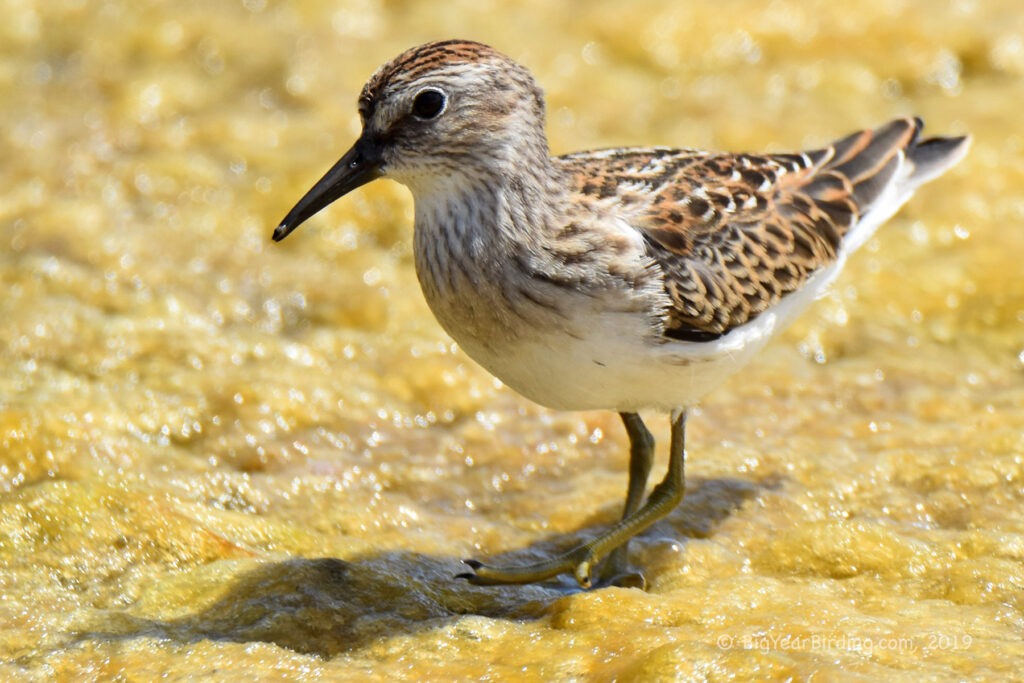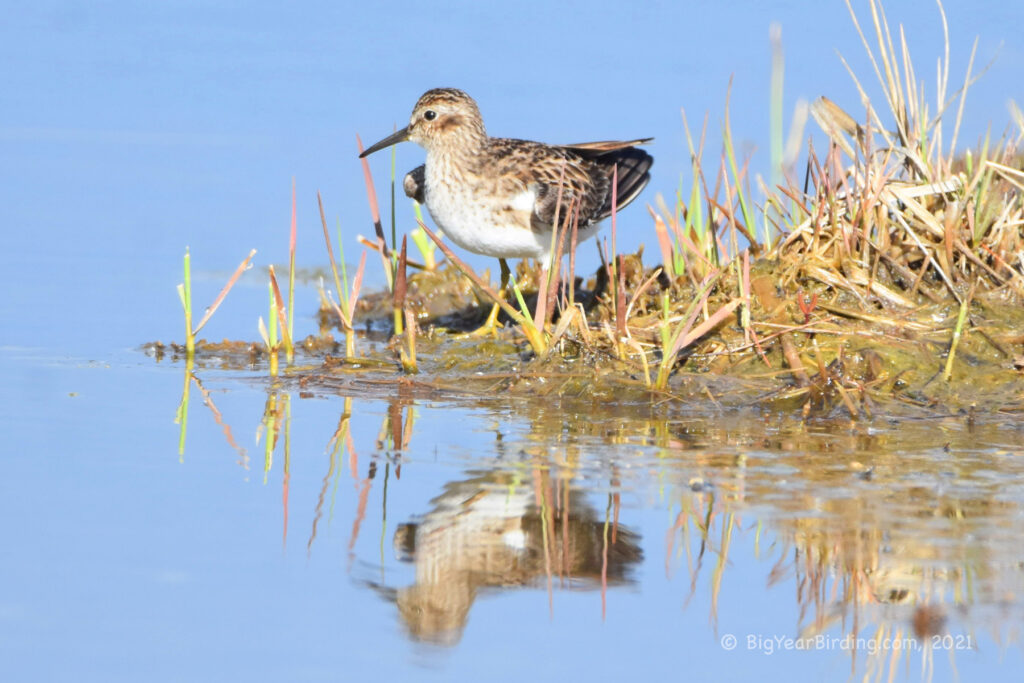
The Least Sandpiper is a tiny shorebird that is found throughout North and South America. It is the smallest of all the sandpipers, measuring only 5 to 6 inches in length and weighing just half an ounce. Despite its small size, the Least Sandpiper is a hardy bird, able to withstand long migrations and harsh weather conditions.

One of the distinguishing field marks of the Least Sandpiper is its sharply pointed bill, which is used to probe in mud and sand for small invertebrates. The bird has brownish-gray plumage on its back and wings, and a white breast and belly. During breeding season, the Least Sandpiper has a reddish-brown wash on its breast and sides.
The Least Sandpiper is a migratory bird, spending its summers breeding in the tundra regions of Alaska and Canada, and then flying south for the winter. Some birds will travel as far south as Argentina and Chile, while others will spend the winter in the southern United States and Mexico. The migration of the Least Sandpiper is impressive, as these small birds fly thousands of miles twice a year.
During the breeding season, the Least Sandpiper can be found in wet meadows and boggy areas, where it nests on the ground. The female will lay 3 to 4 eggs, which are incubated for about three weeks. The young birds will leave the nest after a few days and begin to forage for themselves.

While the Least Sandpiper is not considered threatened or endangered, it is still vulnerable to habitat loss and degradation. Conservation efforts are underway to protect wetland areas where these birds breed and migrate, to ensure that future generations can continue to enjoy the sight of these small but hardy shorebirds.

